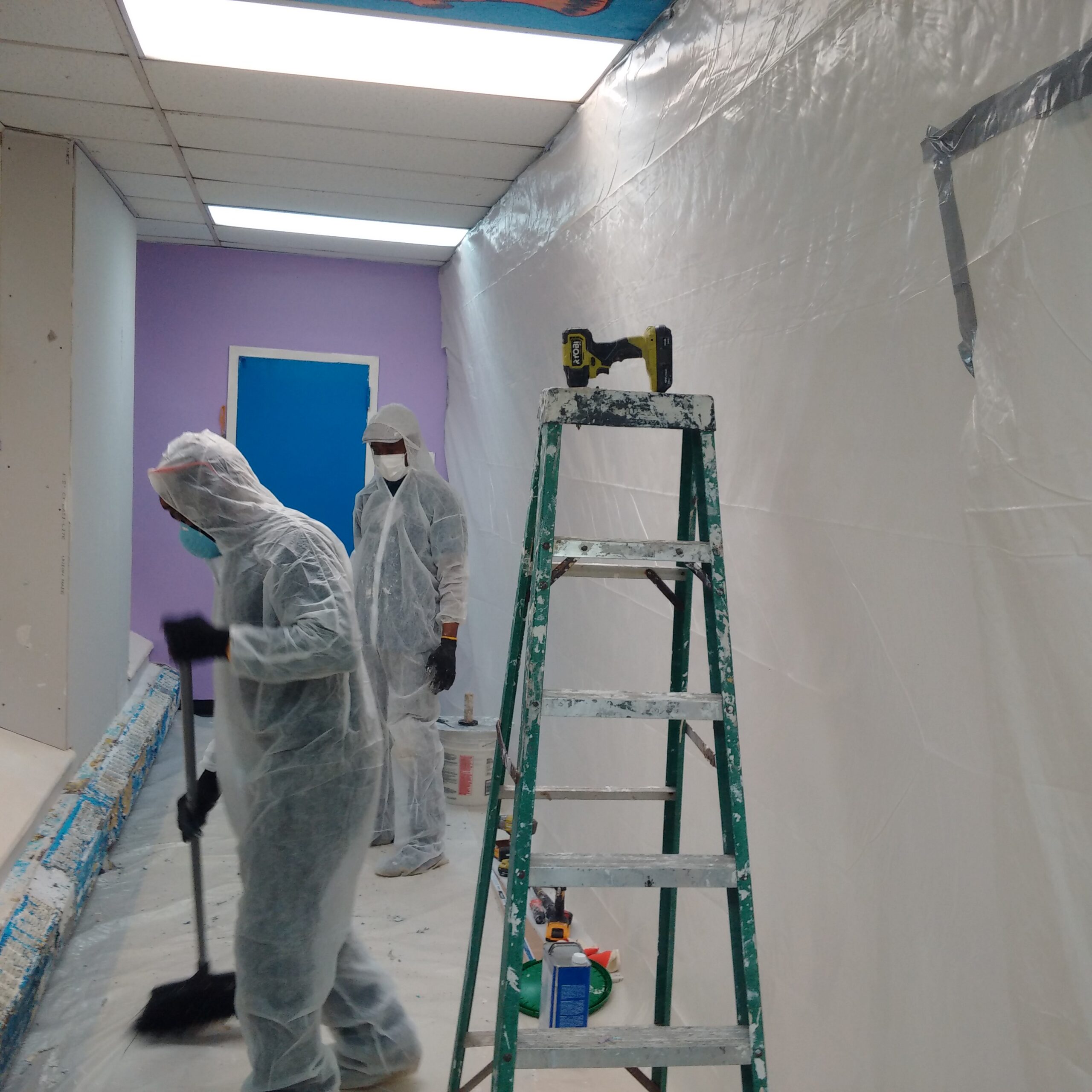Reputable DOH & HPD Lead Violation Removal in NYC-- Safeguard Your Building
Reputable DOH & HPD Lead Violation Removal in NYC-- Safeguard Your Building
Blog Article
Ideal Practices for Making Sure Safe and Complete Lead Offense Reduction
Dealing with lead infraction reduction calls for a multi-faceted technique to make certain both safety and conformity. It's the final clearance process, entailing detailed inspections and lab screening, that genuinely verifies a lead-free atmosphere, making sure lasting security. Just how do these practices adjoin to ensure detailed lead reduction?

Initial Analysis
Conducting a first evaluation is a crucial very first step in lead infraction abatement. This stage incorporates an in-depth analysis of the residential or commercial property to recognize the presence, level, and certain areas of lead-based hazards. Certified specialists, such as certified lead inspectors or take the chance of assessors, should execute an extensive website assessment, making use of devices like X-ray fluorescence (XRF) analyzers to properly find and determine lead focus in paint, dust, dirt, and water.
The assessment must additionally include an evaluation of the structure's history, previous reports, and any problems or health and wellness problems reported by passengers - Lead Removal Contractors. Documenting the findings thoroughly is important, as these records form the basis for creating a reliable reduction approach. A thorough analysis likewise involves sampling and lab evaluation, which are crucial to confirm the existence of lead and overview subsequent actions
Furthermore, it is important to communicate the outcomes transparently to all stakeholders, consisting of homeowner, lessees, and governing authorities. By making sure that the preliminary evaluation is carried out with precision and rigor, professionals can lay a solid structure for a targeted and efficient lead reduction procedure, inevitably protecting public health and ensuring conformity with regulative requirements.
Appropriate Control
Appropriate containment is critical to stop the spread of lead impurities during abatement tasks. Effectively managing containment lessens the threat of lead dirt and debris migrating to non-work locations, consequently safeguarding both the environment and people outside the instant job zone. To attain proper containment, a closed obstacle of plastic sheeting should be developed around the job location, making sure all seams and sides are safely sealed. Lead Removal Contractors. This barrier needs to prolong from floor to ceiling and be taped down to stop any leakages.

Routine assessments of the control location are essential to look for breaches or weaknesses in the barrier. Any recognized concerns ought to be immediately resolved to maintain the integrity of the containment. By sticking to these methods, abatement jobs can efficiently manage lead contamination and alleviate connected health and wellness threats.
Worker Security
Making certain worker protection is extremely important throughout lead reduction jobs to avoid work-related direct exposure to dangerous lead fragments. Necessary procedures include making use of individual safety tools (PPE) such as respirators, gloves, and full-body fits especially developed to block lead dirt and fumes. Workers should undergo thorough training on the correct usage and upkeep of PPE, including fit testing for respirators to make sure maximum efficacy.
Engineering controls, such as regional exhaust ventilation systems, are important in lessening airborne lead focus in the workplace. Administrative controls must likewise be executed, consisting of restricting the period of direct exposure and turning workers to reduce specific exposure times. Routine clinical surveillance and organic surveillance are indispensable for very early discovery of lead absorption, allowing prompt intervention and treatment.
Additionally, establishing a decontamination method is vital. Employees have to comply with rigorous decontamination treatments prior to breaks and at the end of their shift to avoid lead dirt from being brought outside the workspace. This includes extensive hand and face cleaning with lead-specific cleansing representatives and transforming out of infected clothing.
Precise Cleanup
Preserving a safe workplace extends past employee security and incorporates precise cleanup to ensure lead bits are extensively removed from the website. The procedure of thorough cleaning is essential in preventing the recontamination of the abated area and guarding both existing and future passengers.
To achieve a detailed clean-up, all workspace have to be methodically decontaminated. This involves the usage of specialized HEPA (High-Efficiency Particulate Air) vacuum cleansers and wet-wiping techniques to record and eliminate great lead dirt that might have chosen surface areas. It is crucial to cleanse all straight surface areas, including floors, home window sills, and countertops, as well as upright surfaces that might have trapped lead fragments.
Workers need to put on suitable individual safety devices (PPE) during cleaning to avoid exposure to recurring lead dust. Utilized cleansing materials such as wipes, sponges, and wipe heads need to be disposed of based on contaminated materials disposal laws.

Last Clearance
Final clearance is the critical concluding phase of lead reduction that figures out whether the website is risk-free for reoccupation. This crucial action involves detailed evaluation and testing to verify that all lead risks have actually been efficiently gotten rid of. The process starts with a visual inspection by a qualified lead-based paint inspector visite site or threat assessor to ensure no Click Here visible dirt or particles stays. This is followed by collecting dirt clean examples from various surface areas, consisting of floors, windowsills, and various other horizontal surfaces. Lead Removal Contractors.

Last clearance screening not just shields future residents but likewise ensures conformity with neighborhood, state, and federal guidelines. Moreover, it acts as a recorded validation of the abatement specialist's adherence to sector finest techniques. Ensuring a comprehensive and effective final clearance is vital in protecting public health and cultivating rely on the abatement procedure.
Verdict
Guaranteeing risk-free and extensive lead violation abatement necessitates a complex strategy incorporating initial assessments with sophisticated detection techniques, efficient control strategies, rigid employee defense procedures, and thorough clean-up procedures. The last clearance phase, including detailed examinations and research laboratory screening, is vital to verify compliance with EPA criteria. Adherence to these finest methods guarantees a secure atmosphere for occupants, minimizes wellness risks, and supports regulatory demands, therefore promoting public health and wellness and safety in Related Site lead-affected areas.
Report this page